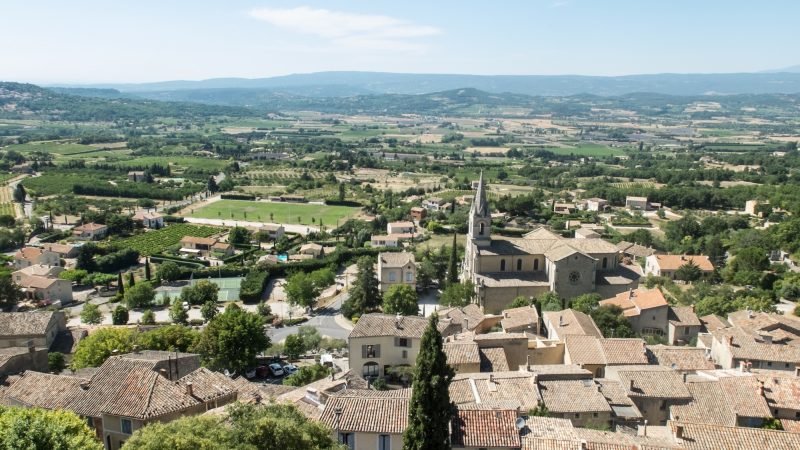Amidst the rolling hills, sun-kissed vineyards, and tranquil river valleys, you’ll find an uncountable number quaint villages and towns in France worth visiting.
Imagine strolling down cobblestone alleys lined with ancient stone houses, their walls draped with blooming flowers in the summer and open-air markets buzzing during the summer.
Picture sipping a glass of local wine on a terrace overlooking a picturesque town square, where centuries-old fountains gurgle and locals chat with friends over the plats du jour at local cafés.
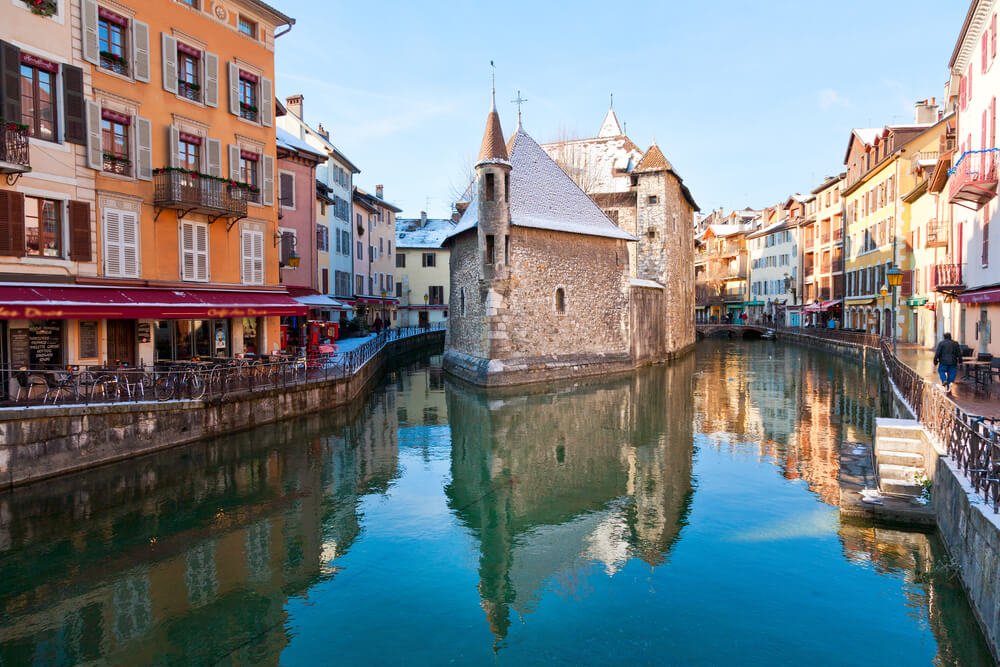
Envision standing in awe before soaring steeples of quaint town churches, still-standing fortresses, and beautifully preserved châteaux.
This is what visiting small towns in France has to offer you, from sun-soaked Provence to the charming half-timbered houses of Alsace.
Whether you escape to the fairytale-like village of Le Bec, wander around the medieval marvel of Carcassonne, or admire the castles of Amboise in the Loire Valley — these beautiful French towns are great bases for your next adventure in France.
So take a seat, and scroll on to discover the magic of France’s villages and towns, as contributed by my travel blogging colleagues who have experienced and loved these French villages for themselves!
The Most Beautiful Small Towns and Villages in France
Cassis
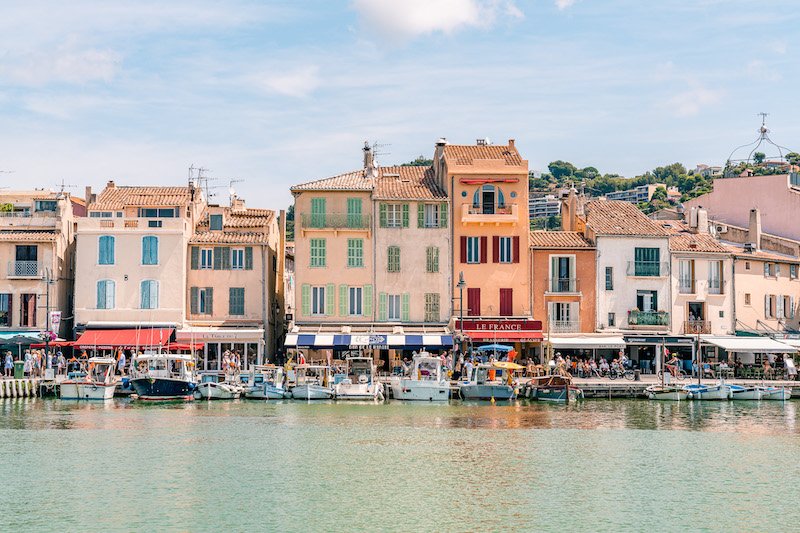
Known for its picturesque port and pastel-colored houses, Cassis in Southern France is the perfect destination if you are looking for a relaxing getaway.
One of the highlights of Cassis is the beautiful beaches with crystal clear waters and soft sand.
The Plage de la Grande Mer is the most popular beach in Cassis, from where you can admire the Château de Cassis, the castle overlooking the town.
There are also several smaller beaches that are worth a visit, such as Plage du Bestouan and Plage du Corton.
However, the real gem of Cassis is the calanques. These limestone cliffs can only be accessed by boat or hiking.
The Calanque d’en Vau is one of the most beautiful calanques and offers breathtaking views of turquoise waters and its pristine beach.
A boat tour or hike to the calanques is a must-do activity for anyone visiting Cassis.
For a more panoramic view of the area, drive along the Route des Cretes.
This scenic road winds its way along the highest sea cliff in France (Cap Canaille) and showcases gorgeous views of the Mediterranean and the surrounding countryside.
And if you are visiting Cassis, don’t leave without trying a glass of its renowned white wine!
Several family-owned wineries of Cassis are open for wine tastings, such as Clos Sainte Magdeleine and Domaine du Bagnol.
Whether you’re interested in exploring the charming small French village, relaxing on French Riviera beaches, or taking in the stunning natural scenery, Cassis is sure to please!
Contributed by Jo of World Wild Schooling
Carcassonne
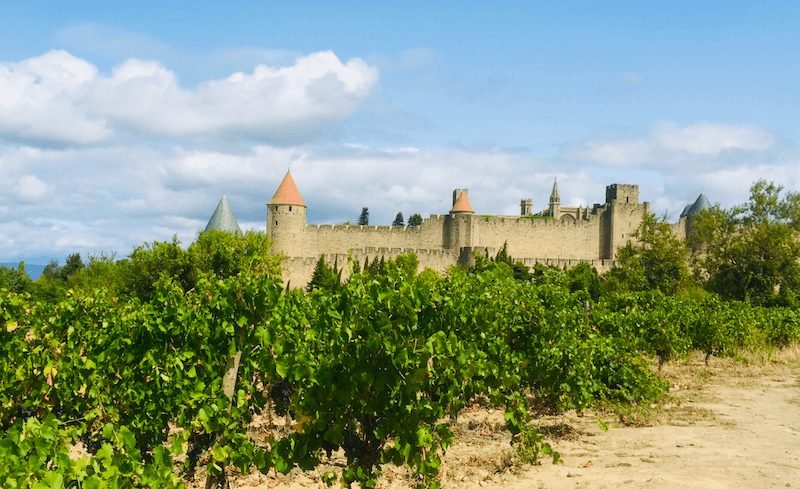
As you tour France make sure to visit the beautiful town of Carcassonne in the Aude department.
Carcassonne is an atmospheric city immersed in the Occitanie way of life and home to a lot of history and the spectacular UNESCO listed La Cité, a fortified medieval citadel which dominates the skyline.
This immense citadel is free to enter, although some of the older buildings have an entrance fee.
Just wandering the cobbled streets and squares is a pleasure, but it does get very busy here in summer and can feel a little touristy.
Be prepared for that and enjoy the sheer scale of La Cité, the ancient buildings and skilled renovation. Visit early in the day if you can, to avoid the worst of the tourist crowds.
If you prefer tranquility to crowds and want great photos, see La Cité from the outside, where you’ll get the best views of the many turrets and fortified walls.
Get on a bike or take a walk up Chemin des Anglais, which takes you behind and around La Cité, where you can truly appreciate the oldest standing medieval city in Europe.
Carcassonne is surrounded by vineyards and ruined medieval castles perched on craggy outcrops, just ready to be explored and there is also an elegant new town – it’s not actually new, just new in comparison to La Cité!
Built outside the walls in the 13th century, the new town is good for mooching and has a local farmers market on Saturday mornings.
Head to Place Carnot for a typically French breakfast of coffee and a croissant before you start to explore.
Contributed by Izzy of The Gap Decaders
Ax-les-Thermes
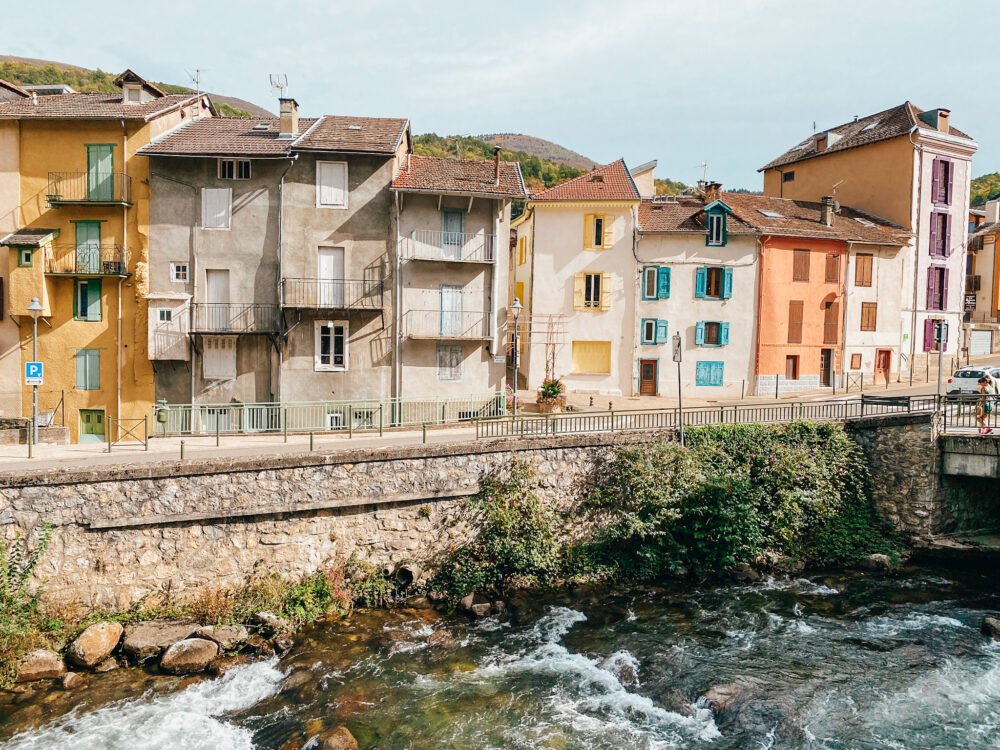
Ax-les-Thermes is definitely not on your average places-to-visit-in-France list.
That’s why the village near the Spanish and Andorran border has retained its traditional French charm.
It’s so close to the border that you can even do a day trip to Andorra, Europe’s sixth smallest country.
As you may have guessed from its name, the village of Ax-les-Thermes is known for its natural hot springs.
You can see the actual hot springs around town coming out of fountains, where the water is almost too hot to touch.
They also have shallow pools in public spaces with really nice warm water where you can soak your feet.
And if you want to really relax in the hot water, you can spend a day in the local spa.
It’s also worth just strolling through the village, where you’ll see narrow alleys with colorfully painted houses and a stream going through the village.
You can get the best view of the village and the surrounding area from “Rocher de la Vierge à Ax-les-Thermes”, a viewing point on a small hill behind the spa with a little chapel on top.
It’s a short walk through a nice forest to get to the viewing point, and from the top, you have a beautiful view of the whole area.
Contributed by Tina of Veganderlust
Menton
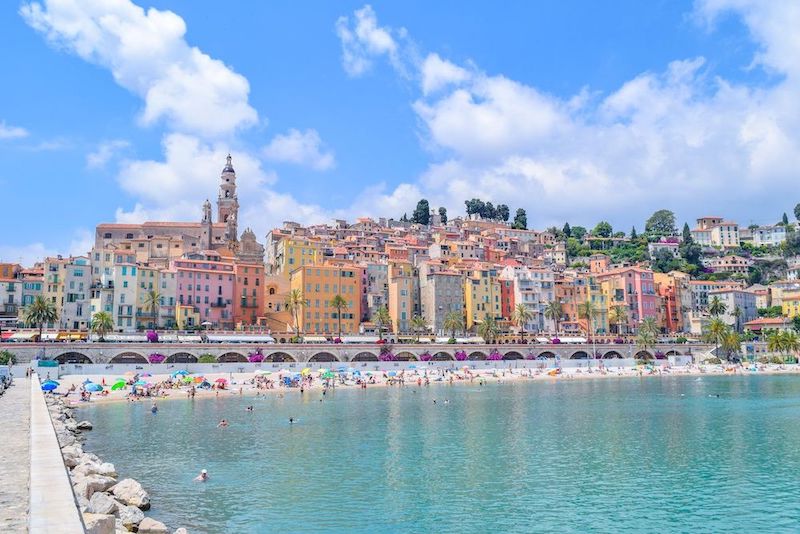
Menton is a charming, colorful village located on the French Riviera.
Situated on the border of Italy, Menton offers a unique Mediterranean experience of both French and Italian cultures at once.
The Old Town of Menton is a special place where you can wander through narrow cobblestone streets, pass historical cathedrals, and explore the quaint gardens.
Check out the 17th-century Saint-Michel-Archange Basilica, a must-see for its Baroque-style interior and impressive bell tower.
Creatives will appreciate the Jean Cocteau Museum located in the heart of Menton by the beach, displaying the famous French artists’ works.
Nature lovers should explore the Menton Botanical Garden, a lush 19th-century garden with all sorts of exotic flora.
Along the edge of the water, you can take a stroll on the Promenade du Soleil. You can take the path all the way to Plage des Sablettes, the town’s main beach, which opens up to a protected bay perfect for a swim.
Walk out onto the rocky pier that juts into the sea and you’ll be able to take a beautiful portrait in front of the layered colorful buildings that Menton is known for.
For the best view from above Menton, head up to the Cemetery of the Old Chateau. From there, you’ll enjoy panoramic views of the village, the sea, and the mountains.
Menton is a truly special place that combines natural beauty with Mediterranean cultural charm. If you ask me, it’s a must-visit small town on the Côte d’Azur!
Contributed by Victoria of French Food
Hunawihr
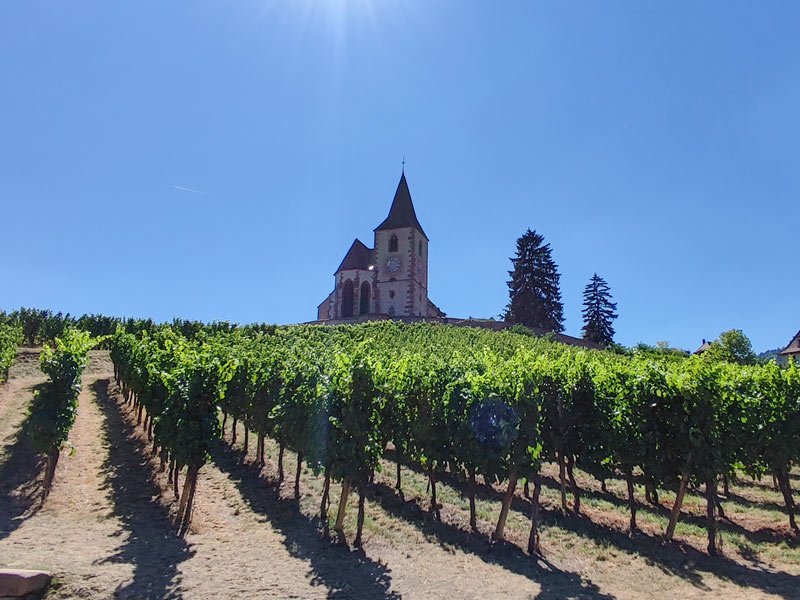
Hunawihr is a little hamlet of 600 inhabitants in the historical Alsace region and is easily one of the most charming villages in France.
This village is located between Riquewihr and Ribeauvillé, two popular tourism hubs.
Yet, Hunawihr has escaped all the limelight and has remained a little unknown travel gem!
The Romans were the first to tilt the hilly lands for their wine making. A small outpost was established about 1400 years, during the time when a kind noble woman was helping the poor and sick.
Hunawihr was named after her, saint Hune. A legend tells the tale of saint Hune turning water to wine in the fountain.
The fountain still stands in its original place, right next to some of the most prestigious Grand Crus vineyards in Alsace.
A walk across the vineyards takes you up to the fortified stone church from the 14th century, which is situated on a hill overlooking the thorp.
A spectacular view awaits you, with vineyards surrounding the traditional half-timbered homes of the people of Hunawihr.
The interiors of the medieval church depict grapes on the stained-glass windows, honoring the age-old viticulture heritage of Hunawihr.
Exclusive wines can be purchased at the co-op winery, and they also offer tours to their award-winning Rosacker Grand Crus vineyard.
Truly, an authentic Alsatian experience awaits you in this village nominated as one of the most beautiful villages in France.
Contributed by Paul D’Souza of Paulmarina
Bayeux
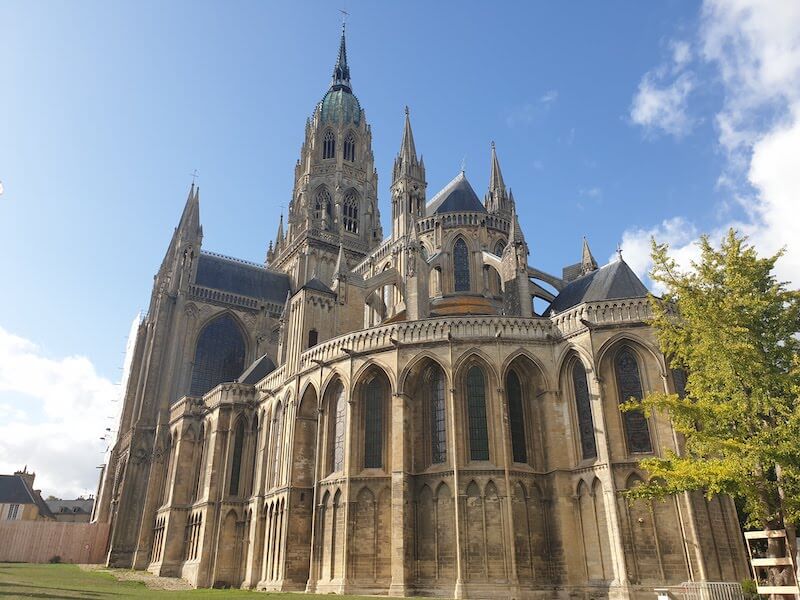
Step into the town of Bayeux, located in Normandy, and you’ll feel like you’re walking in a fairytale.
The 11th century Notre-Dame Cathedral punctuates the horizon – as you look out over it (many of the hotels in town have cathedral views) you’ll notice the glorious medieval architecture, surrounded by historic, brick-built houses.
The town’s watermill, which operates on the River Aure, looks straight out of a fairytale, with gushing water flowing through.
Unlike many other towns in Normandy, Bayeux wasn’t too badly damaged in World War II.
Walking tours of the historic town centre (in French and English) leave from the tourist centre.
While Bayeux is a dream to stroll around, it’s most visited for its charming Bayeux tapestry.
This is a huge artwork that depicts the Norman conquest of England, telling the entire story of how William the Conqueror journeyed over the channel and vanquished the country.
There’s also a D-Day Museum, where you can learn about when troops landed on Normandy’s beaches in World War Two.
While Bayeux is often initially visited for its enigmatic history, it’s also an exceptionally beautiful town.
Take a side trip here from Paris, or visit while you’re exploring Normandy, and you’ll be blown away!
Contributed by Claire from Europe in winter
Les Houches
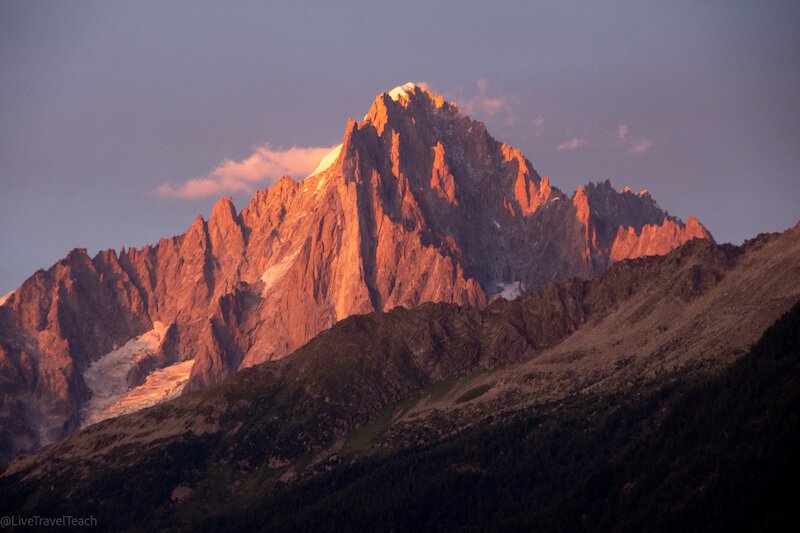
Les Houches is one of the most beautiful villages in France.
The train ride in from Paris will take you through rolling countryside and gradually get more scenic as you get closer to the French Alps.
Les Houches is a lesser known village near Chamonix (an ever-popular winter destination!), the French ski capital and popular kicking off point for many hikers on the Tour du Mont Blanc.
Les Houches has a railway station making it easy to access from anywhere in France and a great place to start the Tour du Mont Blanc (TMB).
This path takes you into Switzerland and Italy as you circumnavigate Mont Blanc with the best landscapes of the Alps.
Les Houches offers all the scenery, shopping and restaurants without the crowd that gathers in it’s more famous neighbors.
Hotel Saint Antoine is a great choice for where to stay, with romantic rooms and an excellent menu.
Evenings bring beautiful alpenglow to the mountains in this all season destination with ski lifts and summer trails throughout the valley.
Les Houches has a bus system that takes you throughout the Chamonix valley and hotels often offer complimentary tickets.
The Col De Voza is an easier day hike and even has the Mont Blanc Tramway, France’s highest cogwheel train.
At Col de Voza there are a few restaurants near the top and countless hiking trails connecting with the TMB.
Aiguille du Midi is another nearby massif in the region that sports glaciers and scenery that will leave you breathless.
You honestly can’t go wrong with any outdoor experience in this picturesque French village.
Contributed by Mike Still of LiveTravelTeach
Flavigny-sur-Ozerain
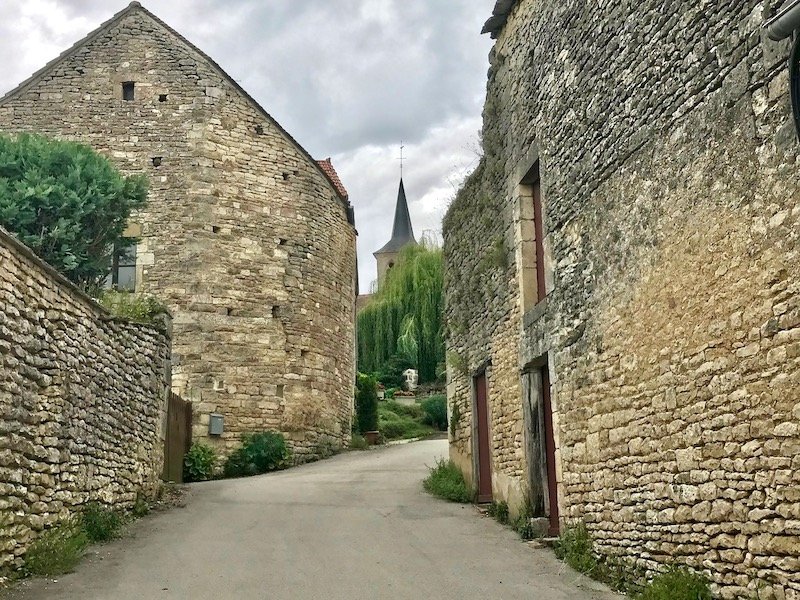
Flavigny-sur-Ozerain, in the heart of Burgundy, is officially one of France’s most beautiful villages – officially because it belongs to the association that awards this distinction to France’s superlative villages.
Flavigny, as it is known for short, obviously ticked all the boxes when it was chosen as the location of the film Chocolat (with Johnny Depp), in which co-star Juliette Binoche opens a chocolate shop.
The village is charming, with history seeping from every cobblestoned street and defensive rampart.
You can play spot the Chocolat locations, of course, but there is plenty more to do in Flavigny.
France has a famous range of anise candies, called Les Anis de Flavigny, which were made in the local abbey for centuries and which were revived a century ago.
You can have a guided tour of the candy factory and its intriguing small museum.
For lunch, head to La Grange, a convivial local eatery for some Oeufs en Meurette, a typical regional dish of Burgundy made of poached eggs in a wine sauce, Burgundy of course.
After lunch, drop by Saint-Genest church, another Chocolat location. Despite its film fame, the village has avoided becoming a tourist showcase.
If you didn’t know about the film, you’d never guess it had been filmed here!
No tacky souvenirs, no Johnny Depp mementos, only winding medieval streets lined by ancient houses, all reflecting an aura of centuries past.
Contributed by Leyla Alyanak of Offbeat France
Amboise
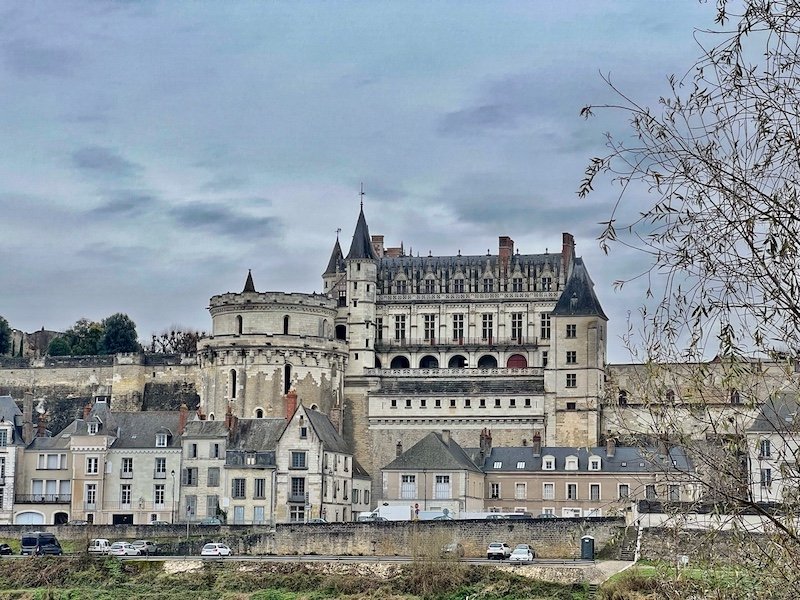
The beautiful historic town of Amboise lies on the banks of the Loire River, between Blois and Tours, in the heart of the ‘chateaux region’ of the Loire Valley.
The three chateaux in the town are all worth visiting.
The first is the impressive Château Royal d’Amboise, the dominant feature on Amboise’s skyline.
Leonardo Da Vinci is buried here in the Chapel of Saint Hubert.
If you don’t want to explore inside the chateau, the beautiful formal gardens alone are worth exploring.
Top Tip – head to the L’Île d’Or (Gold Island) in the Loire River for a fantastic view of the chateau and the town.
Even more special is that if you are arriving by train, this view greets you as you enter the town!
The second chateau is Château du Clos Lucé, where Leonardo da Vinci lived and worked for the last three years of his life.
The chateau also features a fascinating exhibition dedicated to Da Vinci’s inventions.
The third and final chateau is the 15th-century Château Gaillard which belonged to King Charles VIII.
After all those chateaux, it’s time to relax and sample the local wines.
The Caves Ambacia has a 500-year-old wine cellar and an excellent place for wine tasting.
But one of the best parts of visiting any historic French town is losing yourself in the streets and alleyways, and Amboise is no exception.
Contributed by Sarah Wilson of Life Part2 and Beyond
L’Isle-sur-la-Sorgue
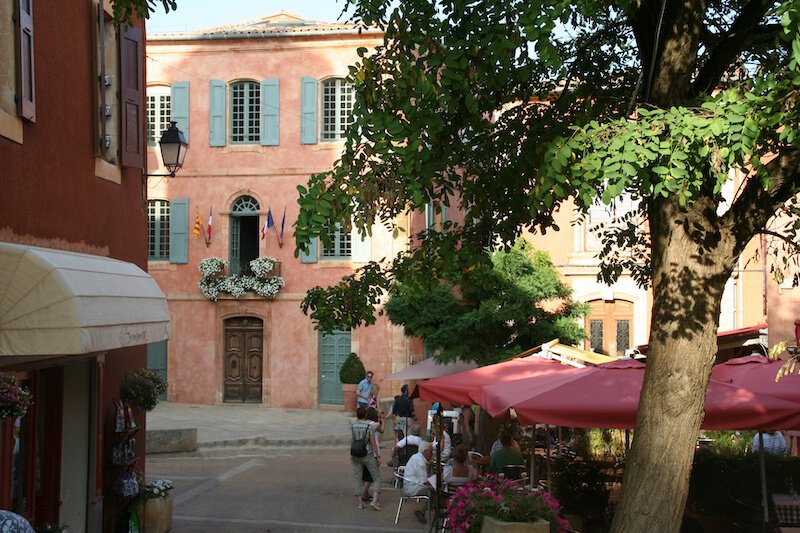
L’Isle-sur-la-Sorgue is a beautiful town in the department of Vaucluse in the South of France.
Visiting L’Isle-sur-la-Sorgue is like immersing yourself in the true French life. You can forget about Paris and Marseille.
Here you’ll need to bring a few basic French words with you, before you get the most French experience of your life.
One of the best things to do in the town is taking a walk along the canals. As the town is built around the Sorgue River, water is very present and contributes to the charm of the town.
On your way, you’ll want to pay specific attention to the waterwheels and the bridges covered in beautiful flowers, especially during spring and summer. This is one of the most stunning viewpoint of the town.
L’Isle-sur-la-Sorgue is also famous for hosting some of the best antique shops in the country. Some people drive for hours to come search for the most unique antique items.
You’ll find then displayed in the numerous boutiques across the town. During summer, there is even a large event that gathers over 500 antique dealers.
Other activities in L’Isle-sur-la-Sorgue include visiting the church and going to the fresh produce market. There you’ll find everything French from cheese to charcuterie.
Make sure also to look at the houses in the village. They’re built in the typical southern French style.
Contributed by Marie of BRbyMary
Roussillon
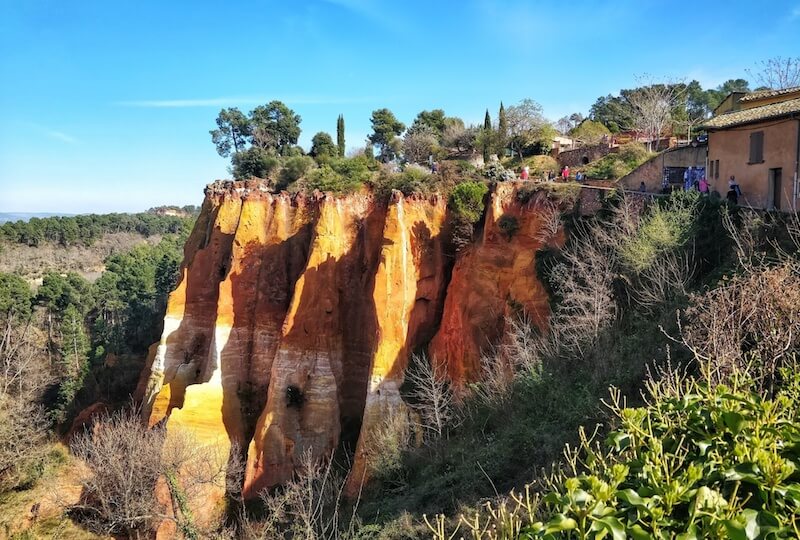
In the interior of the Luberon Valley lies Roussillon – one of the most beautiful and warm-colored villages in France.
Sometimes, to differentiate this village from a region in France with the exact same name, people call it Roussillon-en-Provence instead.
What is so special about this village?
The red and yellow soil from the area has been used to build the Roussillon houses. And so the town mirrors the surrounding landscape’s unusual tones.
And what gives the earth in Roussillon such vibrant fire-like colors? It is the ochre cliffs all around the village.
Roussillon itself is small and charming. It has narrow streets and super cute and adorable houses. And it is filled with Instagrammable plazas.
The best thing to do in Roussillon is to visit the ochre quarries. These red and yellow beauties have always inspired artists and writers.
The quarry trail is open to visitors most of the time with the exception of the first two months of the year.
After exploring the trail, you will surely work up an appetite. Luckily there are several amazing restaurants in Roussillon.
I really recommend Restaurant David – my absolute favorite!
Not only do they serve delicious food but it also comes with a spectacular view of these unique warm-colored cliffs.
Roussillon also has a lot of beautiful shops and even a market where you can find everything from fresh food from local producers to handmade crafts and souvenirs to take home.
Did I convince you to visit Roussillon yet?
This gorgeous village is perfect for those who love to see something unique, who enjoy small towns and nature alike, and an excellent meal to finish off the day.
This gorgeous village is perfect as a day trip from the nearby Aix-en-Provence, Avignon or even Marseille.
Contributed by Aixoise from All About Aix
Saint-Jean-Pied-de-Port
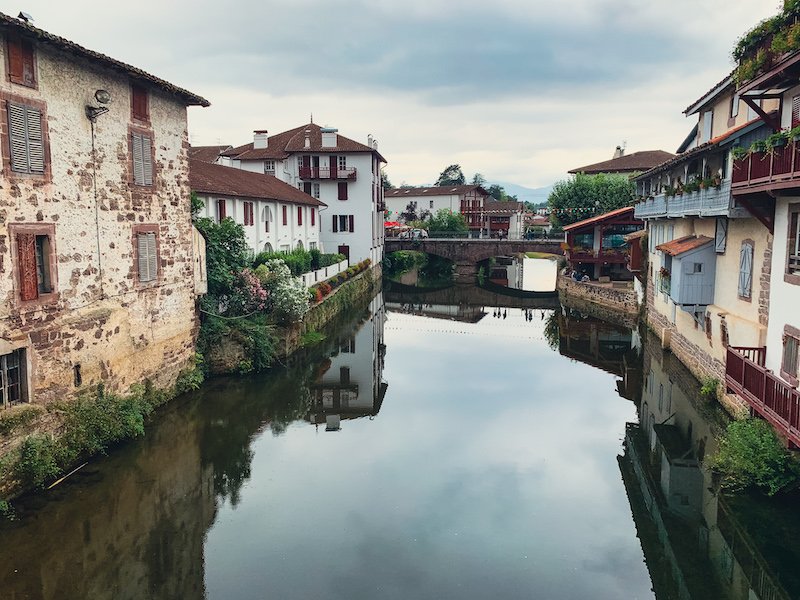
One of France’s most beautiful villages is almost hidden away in the mountains of the French Basque region: Saint-Jean-Pied-de-Port, at the foothills of the Pyrenees Mountains.
This charming village is also blessed with the scenic Nive River that flows right through the heart of the town.
Although small, Saint-Jean-Pied-de-Port is a famous French village. It is the official starting point of the Camino de Santiago – French Way.
The Camino is one of Europe’s top pilgrimage routes with the Camino Frances being the most popular route.
While Saint-Jean-Pied-de-Port is a popular pilgrim hub, that doesn’t take away from the village’s charm.
The medieval cobblestone streets transport visitors back in time.
The Notre-Dame Gothic Church is one of the most significant Gothic churches in the entire region.
The Notre-Dame Gate is one of the town’s original city gates along with the Gate of St. James.
This hilltop gate welcomes pilgrims to the village who started their pilgrimage farther east in France.
Some of the best views in Saint-Jean-Pied-de-Port come from the hike up to the Mendiguren Citadel with several viewpoints that overlook the village.
A stroll along the Nive River is the perfect place to find a quiet place to reflect.
The most epic hike from Saint-Jean-Pied-de-Port is up the mountainous Napoleon Route.
This hiking path leads to Roncesvalles, Spain and is a scenic option for first day of the Camino Frances.
Contributed by Megan of Packing up the Pieces
Etretat
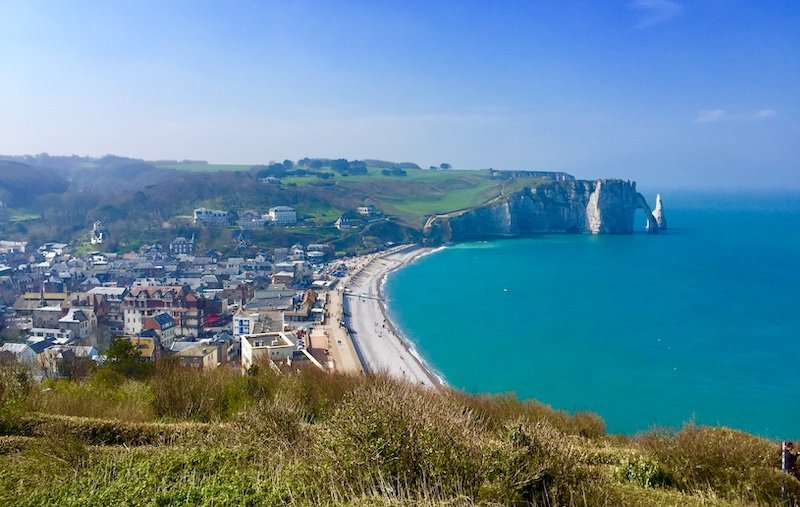
One of the most underappreciated and hidden gems of a town in France is the seaside village of Etretat.
Why, specifically? Its location is on some of the most spectacular cliffs on the planet!
Similar to the White Cliffs of Dover on the other side of the English Channel, the white cliffs in Etretat rise from the sea, towering over the village and the chilly water below.
Etretat is about 200 km northwest of Paris along the coast of the English Channel, directly opposite Brighton, England.
The closest major cities are Rouen and Le Havre, so it can easily be added to any road trip around Normandy.
The main thing to do in Etretat is walk along the cliffs and take in the amazing views.
There are numerous hiking trails that start from the village and go up either side to the viewpoints.
On the east side, a beautiful old chapel sits atop the cliff and makes for a fabulous backdrop for photos of the village below.
In the town itself, typical French architecture governs the look of the buildings that line the cozy streets.
As the town is quite popular with local French tourists, restaurants and shops are overpriced, so expect to pay a little extra when you return from an epic hike along the cliffs.
You won’t be bothered though, as you will love the stunning white cliffs and charming French village of Etretat so much you’ll barely remember the food!
Contributed by Chris Heckmann of Around The World With Me
Epernay
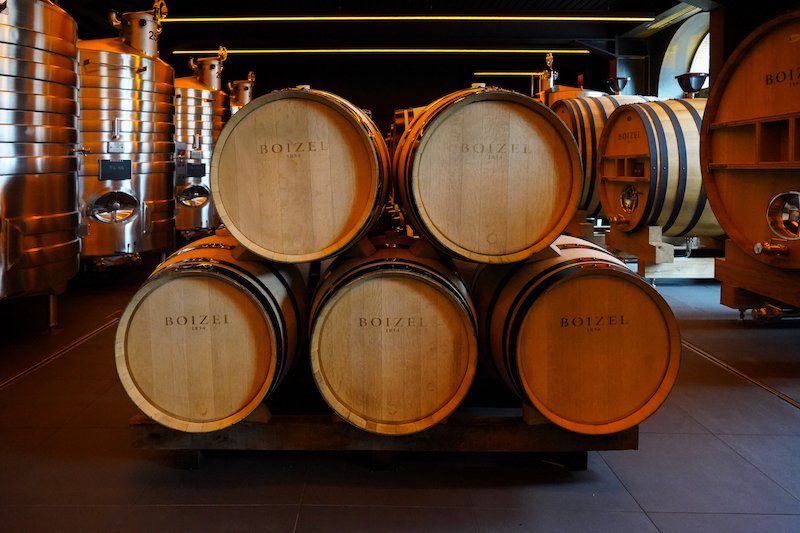
This gorgeous little town is tucked away in the Champagne region but is still easily accessible at just an hour and a half from Paris.
Epernay is special for its Avenue de Champagne, lined with some of the most famous Champagne houses and underground cellars — alone, this road houses over 200 million bottles of Champagne.
One of the best things to do in Epernay is wandering around Epernay’s Old Town, in particular to marvel at the gorgeous Notre Dame Cathedral of Epernay.
Another thing not to miss is a visit to the Chateau Perrier, a stunning example of Late Romantic-era French architecture.
This chateau and garden is now a fascinating museum about Champagne and regional history.
Make sure you sample some of the region’s finest with a Champagne tasting, either on Avenue de Champagne or at a winery, if you venture into the countryside surrounding Epernay.
If you are interested in the history of Champagne, head to the village of Hautvillers right by Epernay to see the Abbey of St. Pierre.
This is where Dom Perignon, a monk who greatly contributed to Champagne production, is buried.
There are also plenty of hiking opportunities past lovely vineyards in the countryside.
For a birds eye view of the Champagne region, take a ride in a hot air balloon.
From above, you’ll see amazing vistas of the lush vineyards and rolling hills dotted with the little villages of the Champagne region!
Contributed by Megan of Megan & Aram
Camaret-sur-Mer
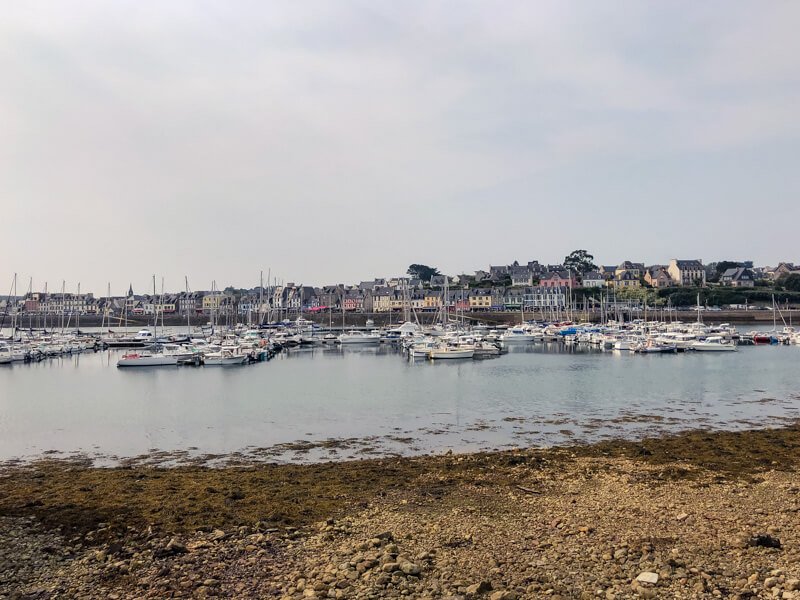
Camaret-sur-Mer is a charming little seaside town at the foot of the Crozon Peninsula.
In fact, one of Brittany’s nicest hikes goes through there – the hike taking you from Cape Pointe de Pen-Hir to Camaret.
You’ll be exploring the Finistère department and Armorica Regional Natural Park (Parc naturel régional d’Armorique).
The best is to start off with the coastal hike with some amazing cliffside views.
That way, you’ll end up in Camaret, ready to see a few sights and have a delicious meal.
This hike forms part of the famous Customs Trail GR34, covering the Breton coast.
The area is important to see also because of its historical legacy. You can see many monuments and even bunkers that formed part of Hitler’s Atlantic Wall.
Once in Camaret, you shouldn’t leave out the sights out on the pier protecting the port.
There’s a UNESCO-listed defense tower from the 17th century built by the famous architect Vauban.
A chapel of Notre-Dame-de-Rocamadour stands nearby and is well worth a visit as well.
It’s dedicated to local fishermen and the wooden interior and models of boats hung from the ceiling reflect that beautifully.
The beachfront of Camaret-sur-Mer is lined with handsome bistros and bars. It’s highly advisable you stop there at least for a drink or a delicious crepe.
Further away from the seafront, Camaret offers yet another unique sight – megaliths of Lagatjar, made up mostly of white quartz stones.
Their purpose remains unknown to this day so you can let your imagination run wild.
Contributed by Veronika of Travel Geekery
Beynac-et-Cazenac
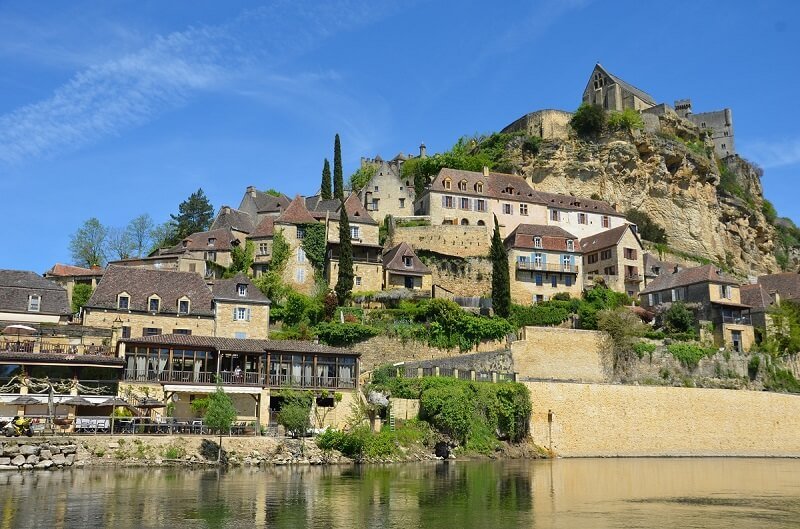
Beynac is so beautiful that it’s on the list of Les Plus Beaux Villages de France.
Beynac is situated in the Dordogne department on the river Dordogne. The town towers above the river on a hill, with a castle all the way on top.
Can it be any more magical?
Beynac is a well preserved Medieval town, with old cobblestone streets and beautiful buildings.
However, the history of the town goes back all the way to the Bronze Age. The town has been in the hands of the English or the French through the ages.
The number one thing to do is to walk up to the castle and visit it. It’s on a 150 meters high rock above the town.
Next to the castle there’s a small path, which has a perfect view on the Dordogne river below.
Then stroll through the small streets in town, and browse through the cute, mostly touristic, shops.
Two other things to do in the Dordogne with kids (or without) start in Beynac.
It’s kayaking on the river Dordogne or taking a ride with a Gabarre de Beynac. Both give excellent views on Beynac from the river. Gabarres are freight ships from the 18th and 19th centuries.
Contributed by Cosette of KarsTravels
Giverny
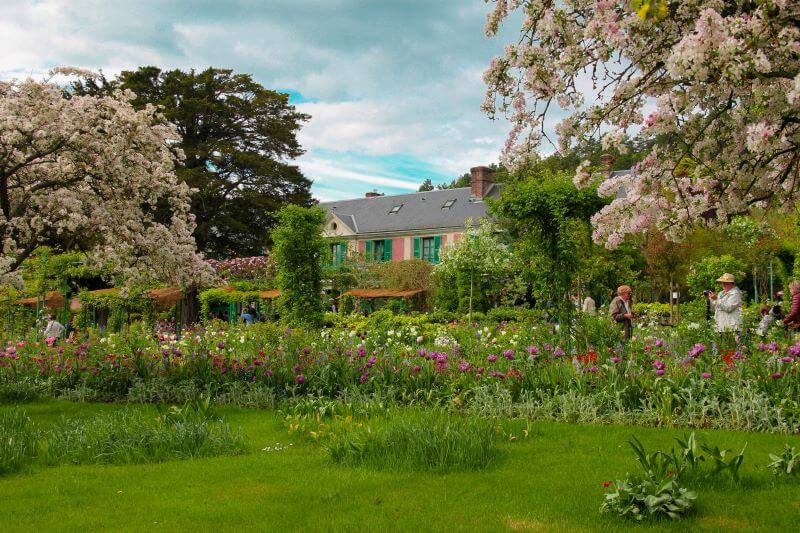
Without a doubt, one of the most beautiful towns to visit in France is Giverny.
Giverny is a quaint little town located about an hour outside of Paris, making it a convenient day trip.
Its beautiful streets lined with greenery, flowers, and charming restaurants and cafes are the stuff dreams are made of!
A walk through town admiring its beauty is time well spent.
But as beautiful as the town itself is, it’s the impressionist painter Monet’s home that stands out as the crown jewel in Giverny.
Claude Monet lived in his Giverny home from 1883 to 1926. It’s a home he renovated in the same bright colors frequently seen in his paintings.
The gardens around his home are impeccable, and he spent a great deal of time outside painting them.
No trip to Giverny is complete without a trip to Monet’s home; plan to visit first thing in the morning so you can avoid the crowds as much as humanly possible.
Start in the gardens; they’re huge and there’s a lot to see! Next, plan to walk through the home. It’s worth a look, but know that it’s the gardens that are the main event.
After visiting Monet’s home head over to the Museum of Impressionism Giverny to see the various impressionist artwork on display.
Enjoy your time in Giverny and Monet’s home and gardens!
Contributed by Chelsea of Adventures of Chels
Le Bec-Hellouin
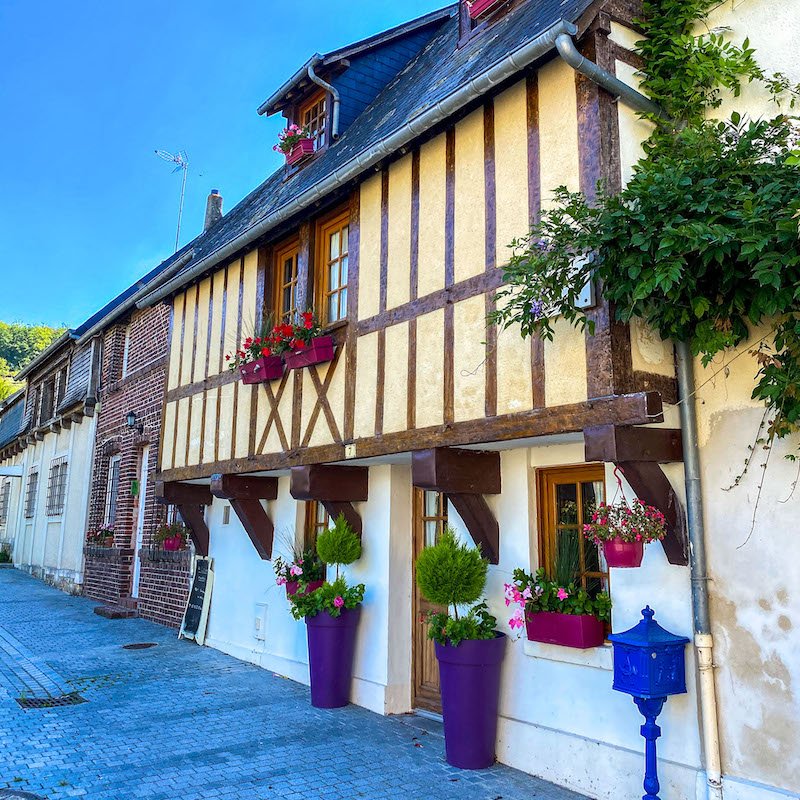
The pretty village of Le Bec-Hellouin is located in Upper Normandy.
Though small in size, its flower-lined streets of historic half-timbered houses make it an attractive and interesting place to explore.
This attention to detail has earned the village the prestigious official certification of being one of the ‘most beautiful villages of France’.
The village centres around Bec Abbey, named after the bec (or stream) that runs nearby.
It was constructed back in 1034 by a Benedictine monk who was a former Norman knight, before it became the most influential abbey in all of the Anglo-Norman kingdom.
This cross-channel power brought wealth and status to the village. Today, the abbey is best known for the pottery that the monks make.
The village also has an attractive church worth seeing, as well as some great easy walking routes through the surrounding areas.
If you are planning to stay long enough to to eat, there are a few restaurants in the village to choose from.
One choice is La Crêpe Dans Le Bec, a great crêperie for an informal (but no less tasty) meal.
If you are wanting to stay overnight, the village has a selection of guest accommodation available, as well as a nice campsite a short walk up a hill from the village centre.
All of this makes Le Bec-Hellouin a beautiful stopover location if travelling through this region of France.
Contributed by Rachel of Costa Blanca Kids
Perouges
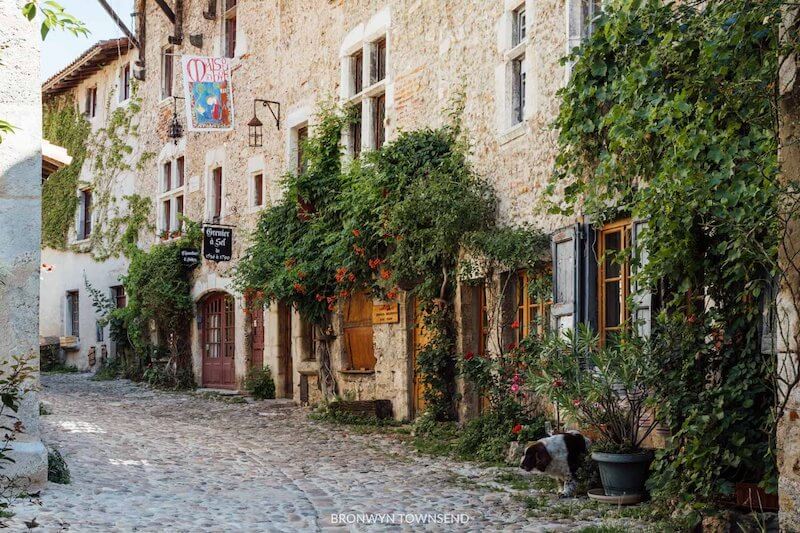
One of France’s most well-preserved medieval villages, Perouges is a highly underrated day trip from Lyon.
Characterized by cobblestone streets encircled by the historic ramparts of the city, visitors will feel as though they’ve been transported back in time.
So authentic is Perouges’ charm, it has been the set for movies including The Three Musketeers.
Perched on top of a hill overlooking the Dombes Plateau, the village can be easily seen in half a day.
Overlooking sweeping views of snowcapped peaks of the French Alps and green farmland, it’s easy to see why ancient merchants and handweavers favoured the location.
Spend time wandering the stonewashed laneways where doorways are framed by grapevines and hydrangea before settling in a cafe by Place du Tilleul square for lunch in the sun.
Framed by a handful of stores selling local fare, you’ll also find the 13th-century inn, Old St. George House, and the Museum of Old Perouges.
You can’t leave Perouges without eating galette!
A pie-like snack, galette is made of sugary, buttery, flattened brioche dough first created in 1912 and now sold freshly baked from wooden-framed windows.
Once an exclusive treat prepared on Good Friday, it has now become a must-try dish when in one of the most charming small villages in France.
Contributed by Bronwyn of Bronwyn Townsend
Èze
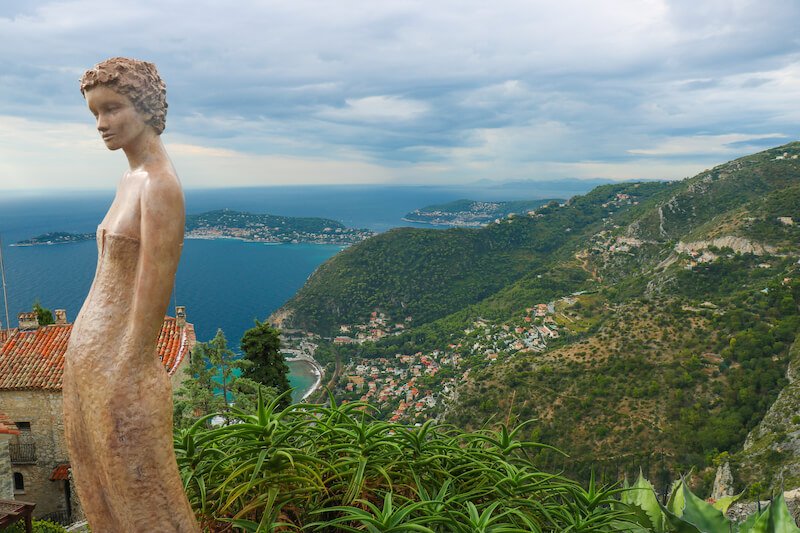
Èze village sits atop the cliffs of the French Riviera greeting visitors who journey up the mountain with stunning views and a gorgeous historic town to explore.
The quaint medieval walled village might just be the prettiest in the region and is well worth the trip inland from the coastal splendor of the Côte d’Azur.
Èze Village is an easy day trip from Nice (which is where most visitors will make their home base), though there are a couple of very prestigious hotels in the village for a longer stay.
The best views of the coastline are found in the spectacular Jardin Exotique d’Èze where the sparkling Mediterranean Sea can be viewed from over 400m above sea level.
The garden is filled with exotic plants and gorgeous sculptures by Jean-Philippe Richard and has incredible views of Cap Ferrat – well worth the entry fee.
Like most old towns, one of the best things to do in Èze Village is simply to explore the winding cobble stoned streets where shops, art galleries and restaurants are littered amongst the fairytale-esque scenery.
Once you’re done exploring, relax with a drink at the five-star Chateau Eza where you can drink in that incredible view once more before heading back to home base.
Contributed by Emma of Emma Jane Explores
Bergheim
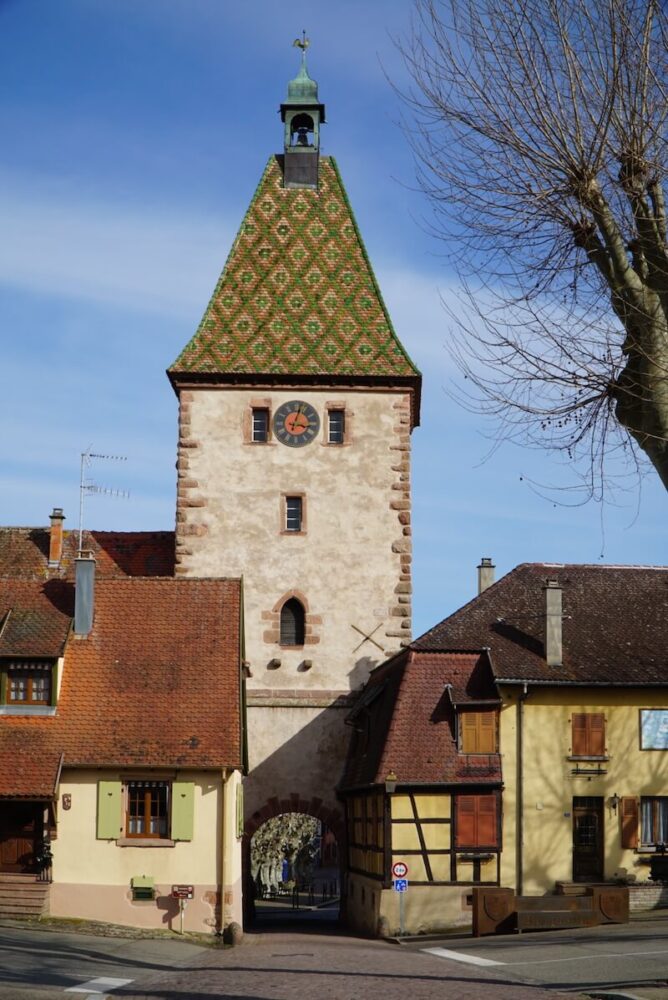
Bergheim was voted France’s favorite village in 2022!
Located about 45 minutes south of Strasbourg by car or transit, this beautiful Alsatian town in northeastern France is worthy of a day trip or a stopover on the Alsatian wine route.
This is especially true if you’re visiting the Strasbourg area in winter since it has a cute Christmas market of its own.
Like other villages in the Grand Est region, the architecture of Bergheim is dominated by charming and colourful half-timbered buildings.
What makes this village extra special, though, is its fortified medieval walls.
Bergheim is surrounded by about two kilometres of intact medieval ramparts, dating from the 14th century.
There are towers standing on the northern side and one remaining gate, located at the village’s western entrance, which once welcomed visitors with a drawbridge.
These ramparts offer a relaxing walk with views of neighbouring vineyards. Bergheim is best known for the Gewurztraminer grapes, used in white wines, and has two Grand Cru vineyards.
Viticulture has been a part of the region since the 10th century, and today it and tourism are Bergheim’s two main industries.
Some other interesting sights in Bergheim include a lime tree, Catholic church, and the so-called “Witches House.”
The lime tree, located in the park just outside the western gate, was planted in 1313 and is considered to be one of the oldest trees in Alsace!
Meanwhile, the church has similarly ancient history, with frescoes and bas-reliefs dating from the 14th century.
The museum at the witches’ house, La Maison des Sorcières, has records of local witchcraft trials in the 16th and 17th centuries.
Contributed by Melanie Ferguson of Postcards & Places
Provins
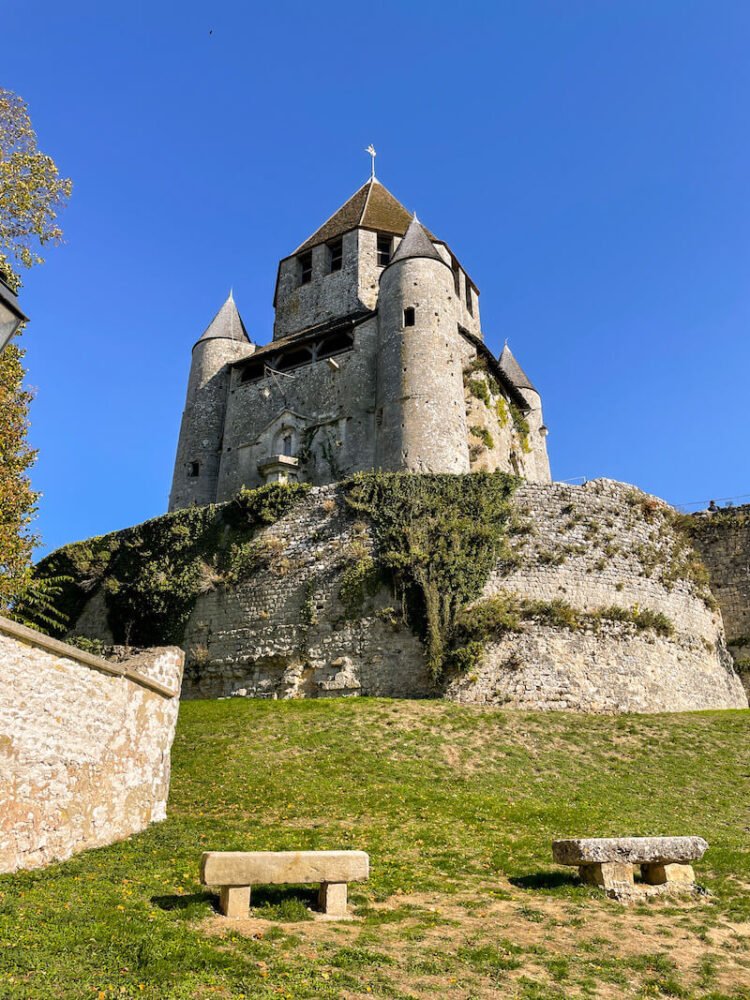
Located less than two hours southeast of Paris, Provins is one of the most beautiful towns to visit in France.
With an appealing history and fascinating half-timbered houses, this medieval town offers a glimpse of the olden days.
You’ll see sites varying from ramparts that are still visible to date to tunnels that shed a light on how locals used to conduct business at the time.
Besides being just a picture-perfect town, Provins has so much to offer!
Start by climbing its fortified ramparts originating from the 11th and 13th centuries, then stroll through its winding streets as you take in the beauty of the town’s half-timbered houses.
However, the highlight of your visit will be climbing the Caesar Tower or Tour César.
This tower dates back to the 12th century and was used as a watch tower and later a bell tower for the nearby Collégiale Saint-Quiriace church.
Today, it’s the perfect vantage point to take in stunning views of the entire town.
Other things to do in Provins include touring the medieval tunnels known as Les Souterrains de Provins and admiring the various types of roses at La Roseraie de Provins, since the town is famous for its roses.
You can also watch the La Légende des Chevaliers spectacle Equestrio (the Legend of the Knights show) to see how locals used to live and visit the Eglise Collégiale Saint-Quiriace to admire its Romanesque architecture.
What makes this town even more appealing are the unique activities it offers!
If you visit in the summer (specifically June), you’ll be able to participate in the famous Les Médiévales De Provins, a festival that celebrates the culture of the town by showcasing traditional attires, music, food, and games.
And if you visit in December, you will be able to attend its medieval Christmas market.
Contributed by Esther of Dreams in Paris
San Paul de Vence
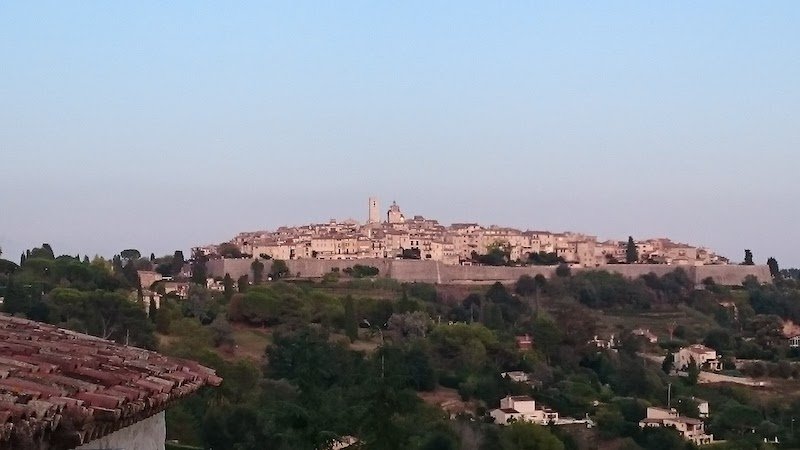
San Paul de Vence is the perfect French village to visit while you are in the South of France. It is a cute quaint walled city, just outside of Nice.
San Paul de Vence is one of the oldest medieval towns in the south of France, so it is bursting with character.
You will fall in love with this small medieval village, with its narrow cobbled stone walkways and old stone buildings.
Wander around this village and enjoy the artisanal markets, unique art galleries and outdoor cafes.
It is the perfect place to go and unwind while traveling around the south of France, while enjoying and embracing in the beautiful weather the French Riviera hosts.
There are plenty of great Michelin restaurants to check out while you are here, including La Table de Pierre.
It is un upscale town that you can’t miss. However, the best part about it is it is still off the “tourist” radar, so it is not flocked with people.
Rather, you will find this small village filled with French citizens enjoying their weekend escape.
Contributed by Megan of Peter Pan Traveler
Montmédy
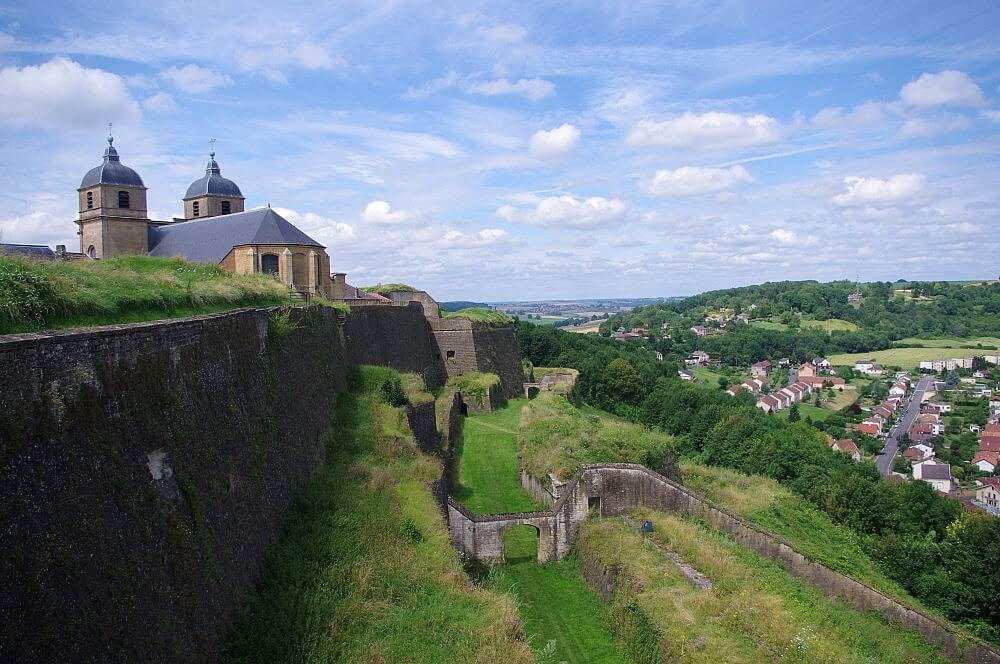
Montmédy is a picturesque village located in the Meuse region right on the border with Belgium.
It’s divided into two parts, with Montmédy-Haut situated on top of the mountain. It’s the latter that is particularly stunning!
Built on a rocky outcrop, the citadel of Montmédy-Haut dominates the village below and offers some amazing views.
For €5, you can walk the ramparts all the way around the village and you’ll have access to two small museums as well.
Once you’re done admiring the views and the fortifications, dive into the charming small shops and art studios.
The village is very small and it’s still being renovated but you can easily spend a couple of hours and have lunch in one of the few restaurants.
For a wider choice of accommodation and restaurant options, make your way to the lower part of Montmédy.
But the area around Montmédy has more to offer than just the two parts of the village. For one, there are plenty of opportunities for hiking and biking.
Plus, the picturesque Belgian village Torgny, which resembles the Provence area, is only a 10-minute drive away.
For those interested in war history, the battlefields of Verdun can be reached within 45 minutes – both are well worth a visit.
Contributed by Babs from Next Stop Belgium
Allison Green is a former teacher who has been travel blogging since 2016. She has a Masters in Teaching and a B.A. in English and Creative Writing. Her blog posts merge her background as an educator with her experience traveling to 70+ countries to encourage ethical, meaningful travel. She has been a speaker at the World Travel Writers Conference and her writing, photography, and podcasting work has appeared in National Geographic, CNN Arabic, CBC Canada, and Forbes, amongst others. Now a full-time traveler, she has lived in Prague, Sofia, New York City, and the San Francisco Bay Area.
